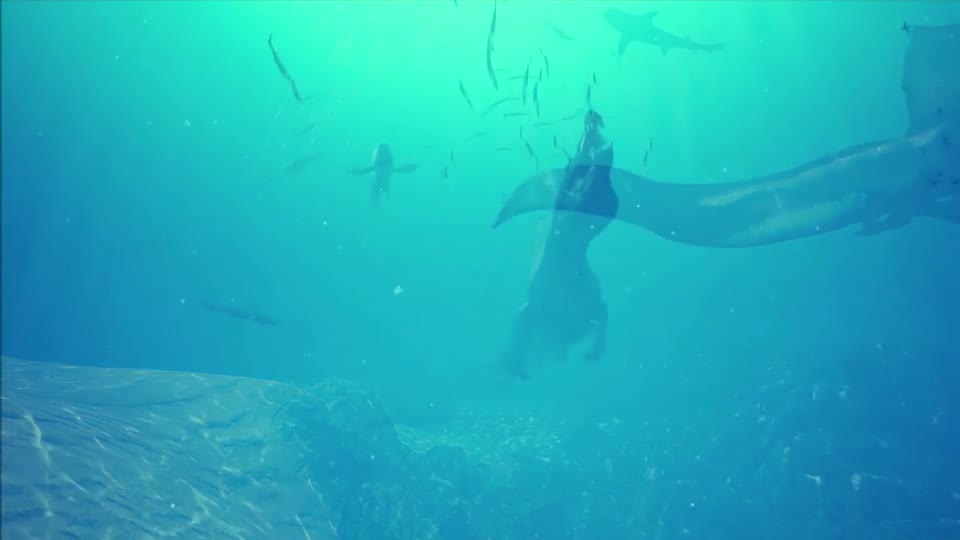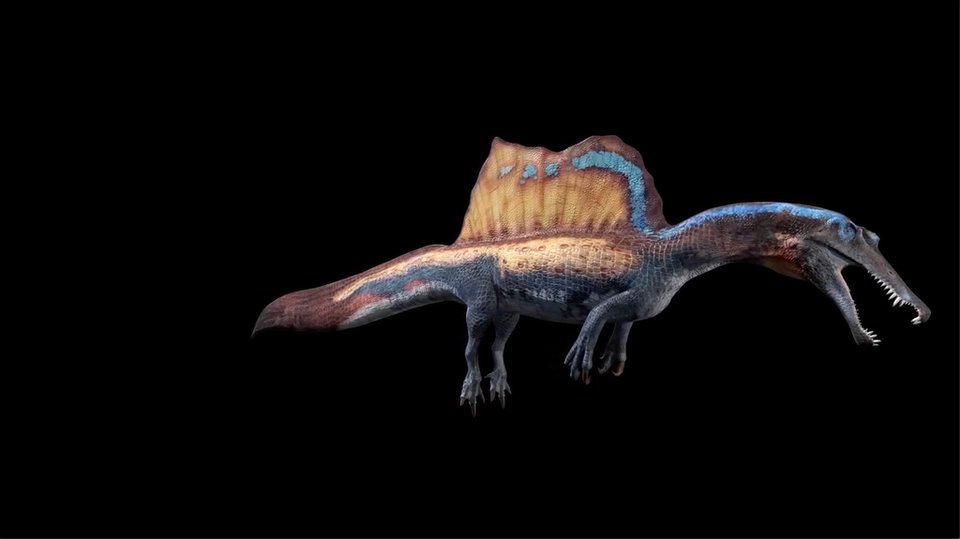LifeinWater
NoteveryscientistagreedwithIbrahim.So,withagrantfromtheNationalGeographicSociety,IbrahimreturnedtothespotagaininsearchofmoreSpinosaurusfossils.Theworkwasverydifficult,butitbecamerewardingaftertheteamdiscoveredmorepiecesofaSpinosaurustail.
Whattheyfoundwasstriking.Inotherdinosaurs,thetailnarrowstoapoint.InSpinosaurus, thetailisbroad.Itlookslikeapaddle.Thetinybumpsthatappeartowardthetail’sendmayhaveallowedthetailtomovebackandforthwhileswimming.Long,thinbonesconnecttothetail,notunlikethetailbonesina fish.
Withthefossilevidencehehadnow,Ibrahimteamedupwithmorescientists.Couldtheyhelphimwithanotherexperiment?Thistime,hewantedtoknowhowthistailmighthaveworkedin
the water.
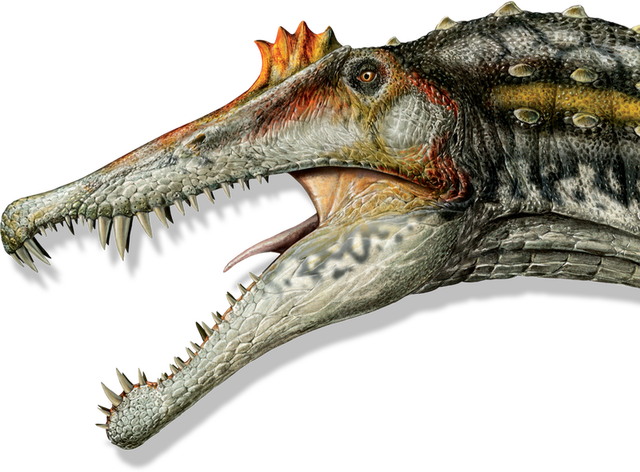
Spinosaurushadcrocodile-likejawswithlarge,cone-shapedteethtogripslippery fish.
Throughdigitalmodelingandarealmodeltestedinwater,theteammadeanimportantdiscovery.Spinosaurus’taildeliversmorethaneighttimestheforwardthrustinwaterthanthetailsofotherdinosaursonland.ThetestleftIbrahimevenmorecertainthatSpinosaurusspentmostofitstimeinthewater,noton land.
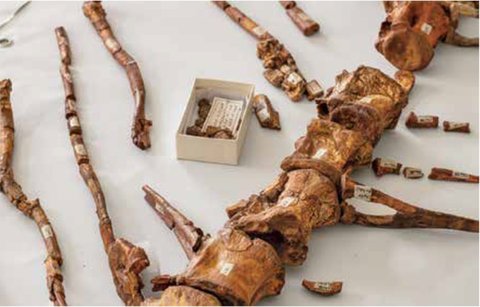
FossilsegmentsofSpinosaurus’tailnowindicatethatitstailwasbroadandusedasapaddleduring swimming.

ScientistspreviouslythoughtSpinosaurus’tailwasnarrow
and pointed.
Inthisanimation,aSpinosaurususesitspaddle-liketailtomovethrough water.
QuestionsRemain
Ibrahimhasn’tfinishedhisresearchyet.Oneoftheothernewlydiscoveredfossilsmayholdanotherimportantclue.Itisabonefromthedinosaur’sfoot.Withit,theteamcannowrecreatethedinosaur’swholefoot.Ibrahimbelievesitwaswidelysplayedandpossiblywebbed.Perfectforanaquatic dinosaur.
IbrahimcontinuestodigtofindanswerstohisSpinosaurusquestions.Fornow,onethingappearsclear—themoreimpossiblethequestionsseem,themoredeterminedIbrahimistofindthe answers.
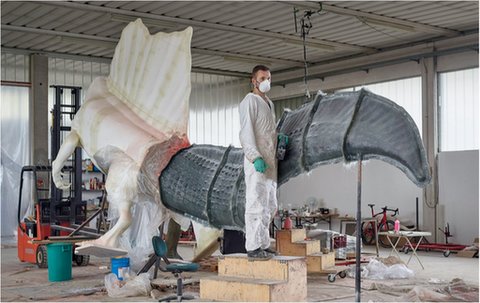
Scientistsattempttocreatealife-sizemodelofSpinosaurus, showcasingwhatisnowknownaboutits tail.
AViewAroundSpinosaurus
Dragtheslidertoturnthis 3DmodelofSpinosaurus.
